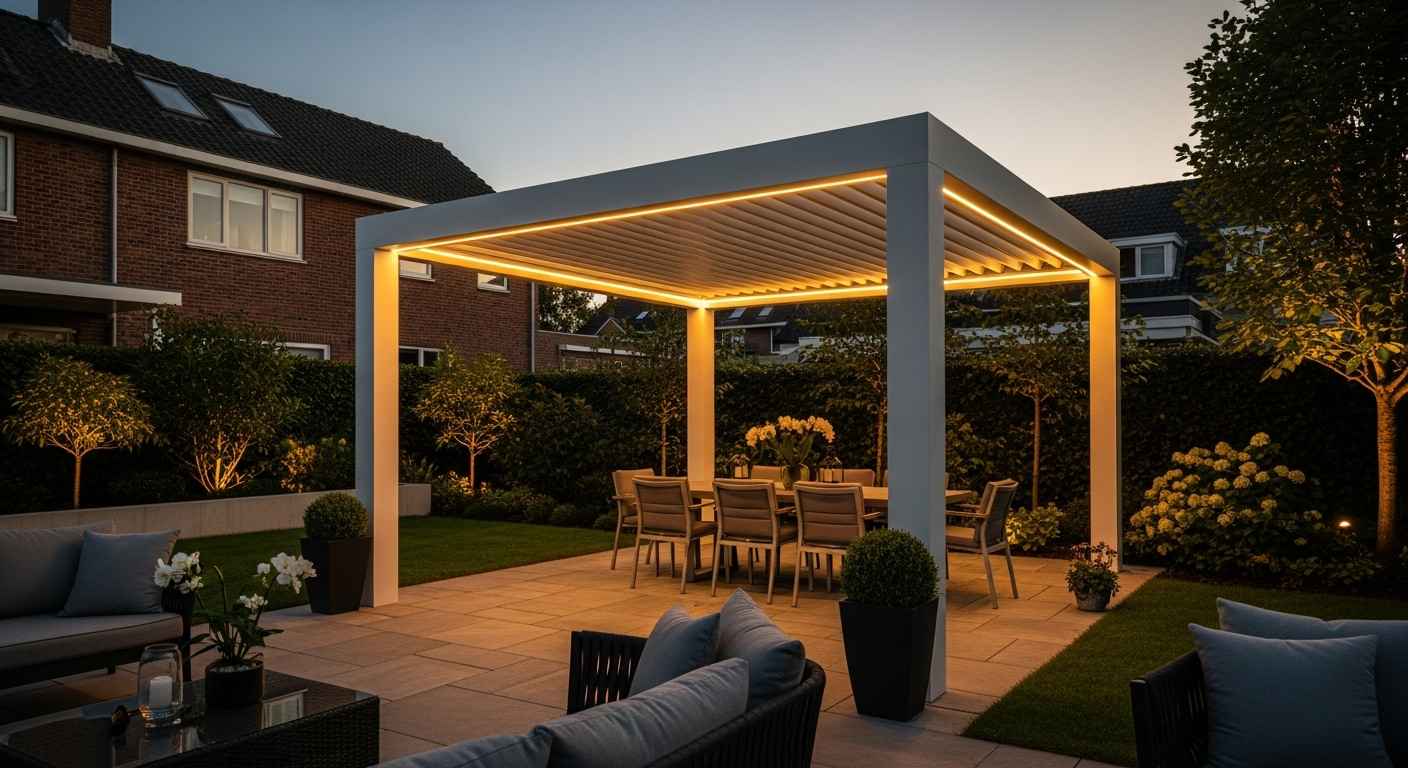Creating the perfect outdoor space starts with choosing the right pergola design. These beautiful structures provide shade, define spaces, and add architectural interest to any backyard. Whether you want a cozy dining area or an outdoor living room, the right pergola can make your dreams come true.
What Makes a Great Pergola Design?
A well-designed pergola combines function with beauty. The best designs create comfortable spaces while adding visual appeal to your yard. Pergolas should not be confused with gazebos, which are always freestanding and tend to have pitched roofs, or arbors, which are usually smaller and typically used to define various spaces within a garden.
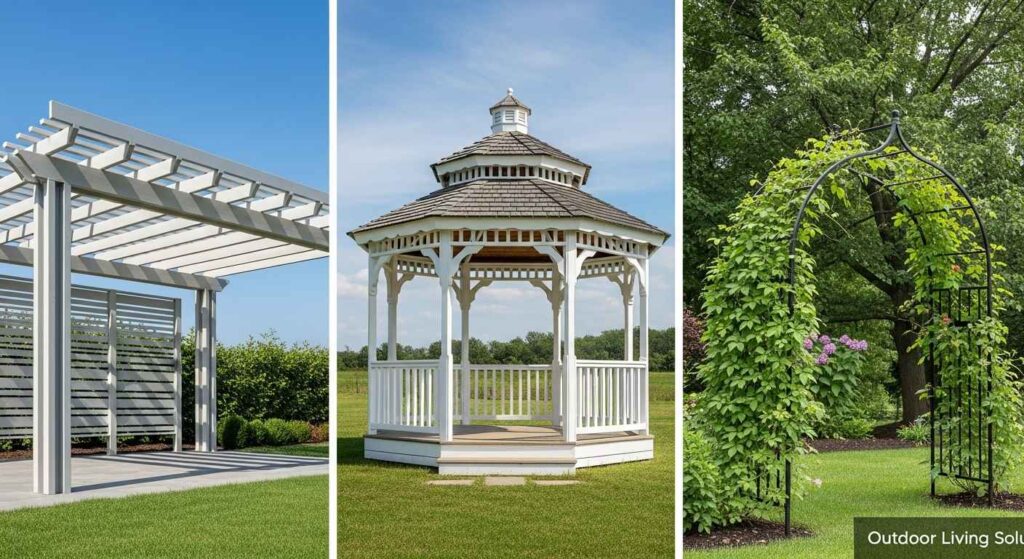
Top Pergola Design Trends for 2025
Smart Technology Integration
One of the most exciting trends in pergola design for 2025 is smart technology integration. These systems allow homeowners to control various features, such as lighting, temperature and louver adjustments, remotely. Modern pergolas now come with:
- Automated louver systems for weather protection
- Remote-controlled lighting
- Temperature sensors
- Weather-responsive features
- App-controlled adjustments
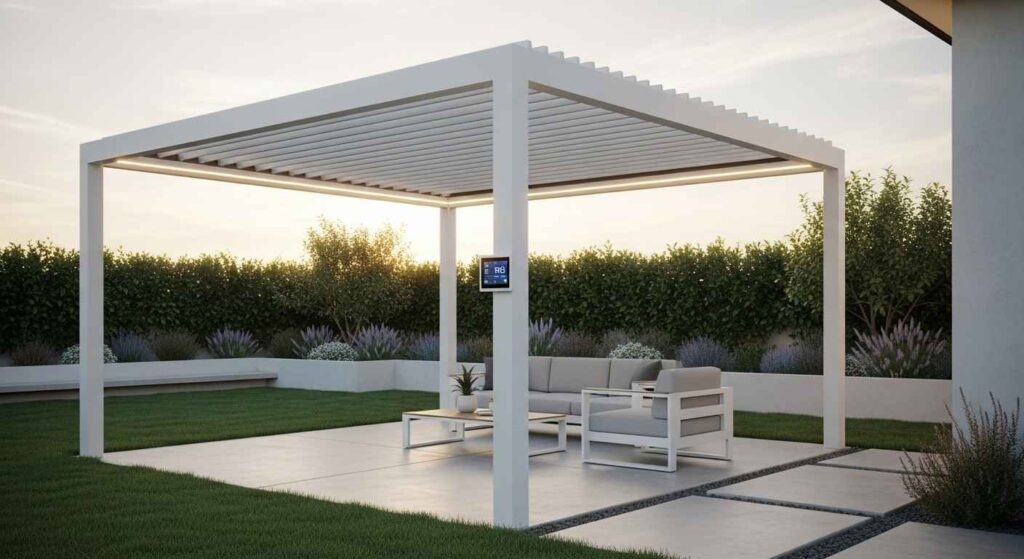
Built-In Lighting Solutions
From recessed LED strips tucked into rafters to pendant lighting suspended over a dining table, the options are both practical and beautiful. Soft uplighting along support beams or post-mounted lanterns add a designer finish while making the space usable well into the evening.
Popular lighting options include:
- Recessed LED strips in rafters
- Hanging pendant lights
- Post-mounted lanterns
- String lights between beams
- Uplighting on support posts
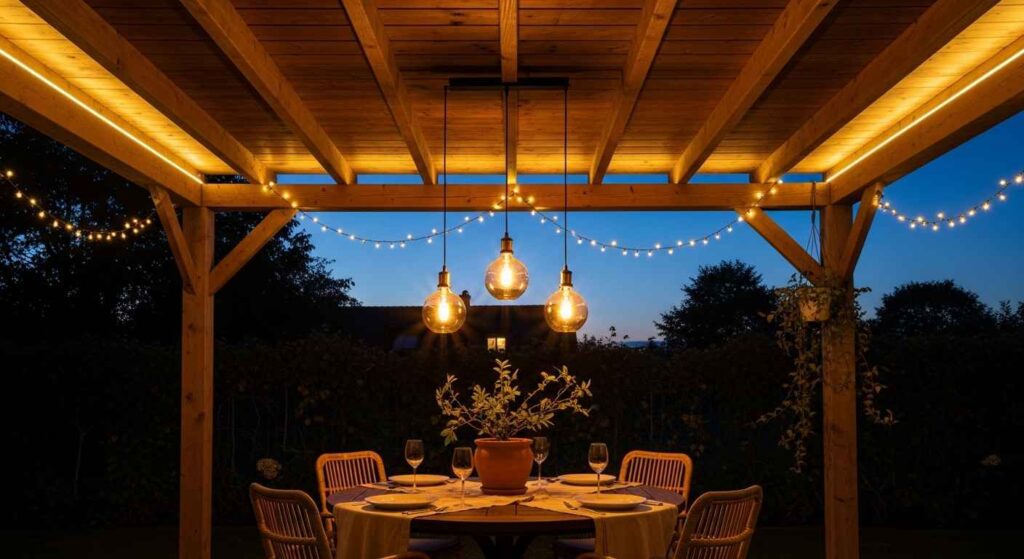
Also Read: 15 Easy DIY Backyard Water Features You Can Build Fast
Material Choices That Make a Difference
Aluminum Pergolas: The Modern Choice
Aluminum pergolas are often praised for their modern looking, affordability and low maintenance. The best and most durable pergola material you can go with is aluminum. It has the best price to performance ratio when you’re trying to build pergolas that last a lifetime.
Benefits of aluminum:
- No rusting or rotting
- Minimal maintenance required
- Wide range of colors available
- Strong and lightweight
- Weather resistant
Wood Pergolas: Classic Beauty
The timeless appeal of wood pergolas is undeniably enchanting. Their organic charm and warmth resonate with those who appreciate nature’s genuine touch in architecture.
Popular wood types:
- Cedar (naturally rot-resistant)
- Pressure-treated pine
- Redwood
- Teak
- Composite wood alternatives
Also Read: DIY Outdoor Movie Night Setup Under $300 – Complete Guide
Vinyl Pergolas: Low Maintenance Option
Vinyl pergolas are renowned for their low maintenance needs and durability. Unlike wood, vinyl doesn’t require staining or sealing, making it an excellent choice for homeowners who prefer a hassle-free option.
Vinyl advantages:
- No painting or staining needed
- Resistant to rot and pests
- Available in multiple colors
- Easy to clean
- Cost-effective long-term
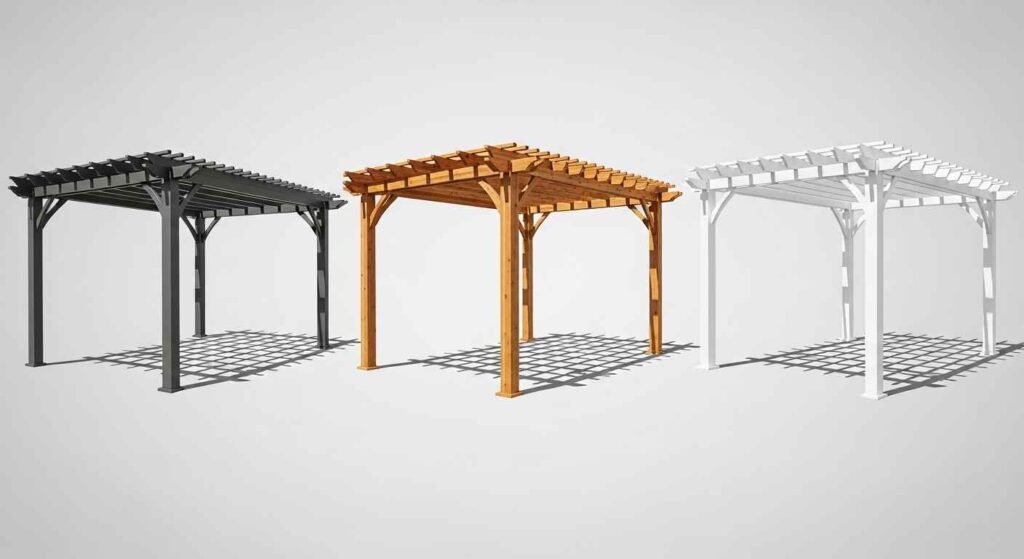
Popular Pergola Styles and Designs
Modern Minimalist Pergolas
White, black, grey, and natural wood tones are among popular color choices for a contemporary pergola, along with geometric designs for pergola structures.
Key features:
- Clean lines and simple shapes
- Neutral color palettes
- Geometric patterns
- Minimal decorative elements
- Focus on functionality
Traditional Garden Pergolas
Classic designs that complement traditional home styles:
- Curved or arched details
- Decorative brackets
- Natural wood finishes
- Climbing plant supports
- Ornate post designs
Attached vs. Freestanding Designs
Attached Pergolas:
- Connect to house or existing structure
- Extend living space outdoors
- Often cover patios or decks
- More cost-effective installation
- Integrated with home architecture
Freestanding Pergolas:
- Stand alone in yard or garden
- Create separate outdoor rooms
- More flexible placement options
- Can serve as focal points
- Require more structural support
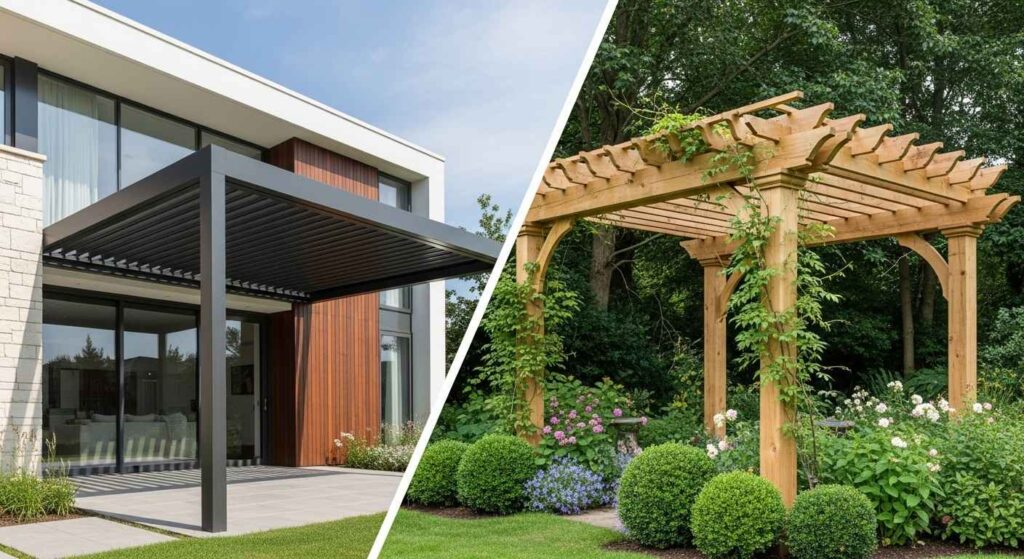
Size and Proportion Guidelines
Small Space Solutions
For compact yards:
- 8×10 feet minimum for dining
- 10×12 feet for comfortable seating
- Corner designs to maximize space
- Wall-mounted options
- Compact square shapes
Large Area Designs
For spacious backyards:
- 12×16 feet or larger
- Multiple seating areas
- Room for outdoor kitchen
- Grand entrance features
- Complex geometric shapes
Height Considerations
Standard height guidelines:
- 8-9 feet minimum clearance
- 10-12 feet for grand appearance
- Consider furniture and plant growth
- Match proportions to yard size
- Account for ceiling fans if needed
Functional Design Features
Weather Protection Options
Modern pergolas offer various coverage solutions:
- Retractable canopies
- Adjustable louver systems
- Partial roof coverage
- Side curtains or screens
- Removable shade cloth
Storage Integration
Built-in storage solutions:
- Bench seating with storage
- Cabinet bases on posts
- Hanging storage for cushions
- Hidden compartments
- Integrated planters
Privacy Enhancements
Create intimate spaces with:
- Lattice side panels
- Privacy screens
- Strategic plant placement
- Curtains or drapes
- Decorative wall elements
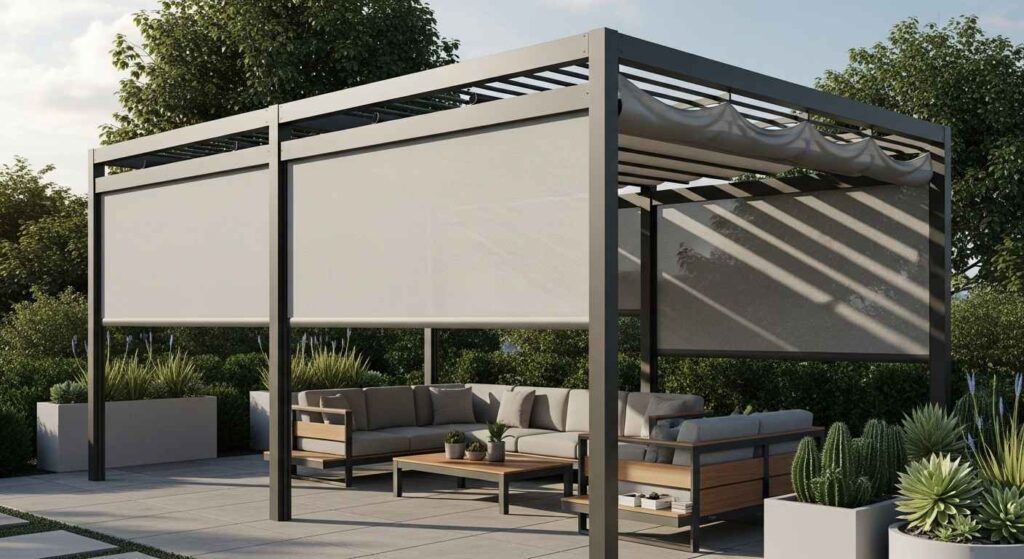
Plant Integration and Landscaping
Climbing Plants for Pergolas
Best plants for pergola coverage:
- Wisteria (spring flowers)
- Grape vines (edible and decorative)
- Clematis (colorful blooms)
- Jasmine (fragrant flowers)
- Boston ivy (fall color)
Ground Level Landscaping
Complement your pergola with:
- Container gardens
- Built-in planters
- Surrounding flower beds
- Decorative ground cover
- Pathway integration
Seasonal Considerations
Plan for year-round appeal:
- Spring flowering vines
- Summer shade plants
- Fall color varieties
- Winter structure interest
- Evergreen options
Lighting Design Ideas
Task Lighting
Functional lighting for activities:
- Reading lights by seating
- Cooking lights for outdoor kitchens
- Pathway safety lighting
- Dining area illumination
- Work surface lighting
Ambient Lighting
Create mood and atmosphere:
- String lights between rafters
- Lanterns on posts
- Candles on tables
- Fire features nearby
- Soft uplighting
Accent Lighting
Highlight design features:
- Beam washing
- Post illumination
- Plant spotlights
- Architectural details
- Water feature lighting
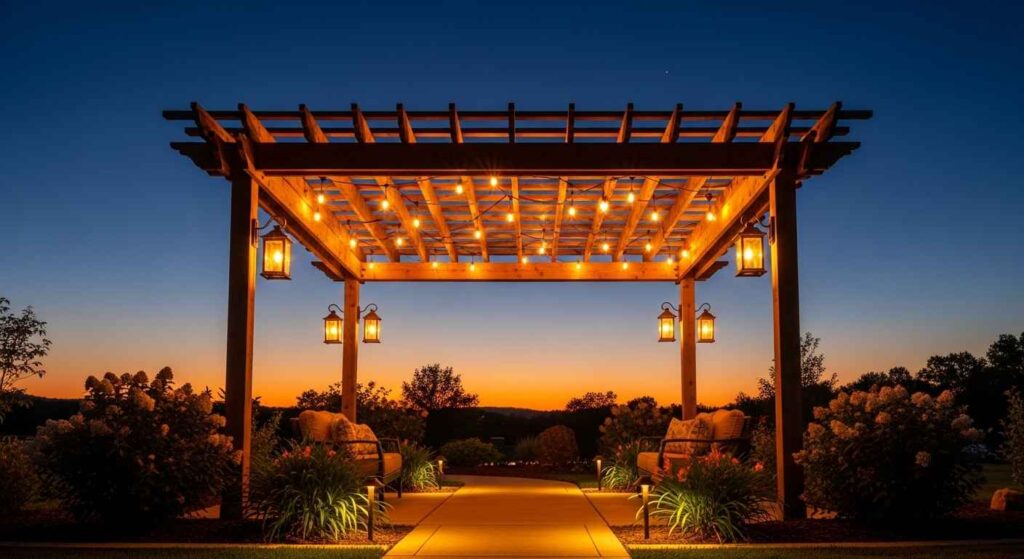
Furniture and Decoration Ideas
Seating Arrangements
Choose furniture that fits your space:
- Dining sets for meals
- Lounge chairs for relaxation
- Sectional sofas for gathering
- Built-in benches
- Swinging chairs or hammocks
Weather-Resistant Materials
Durable outdoor furniture options:
- Aluminum frames
- Teak wood
- All-weather wicker
- Powder-coated steel
- Weather-resistant fabrics
Decorative Elements
Add personality with:
- Outdoor rugs
- Colorful cushions
- Wall art or mirrors
- Wind chimes
- Decorative planters
Also Read: 25 Small Patio Ideas That Make Tiny Spaces Feel Huge
Budget-Friendly Design Tips
DIY-Friendly Features
Save money with:
- Simple rectangular designs
- Basic lumber construction
- String lighting instead of hardwired
- Paint instead of stain
- Container plants vs. built-in planters
Cost-Effective Materials
Budget-friendly options:
- Pressure-treated pine
- Basic aluminum kits
- Simple vinyl designs
- Standard hardware
- Basic roofing materials
Phased Construction
Build in stages:
- Start with basic structure
- Add roofing later
- Install lighting over time
- Gradually add furniture
- Expand landscaping seasonally
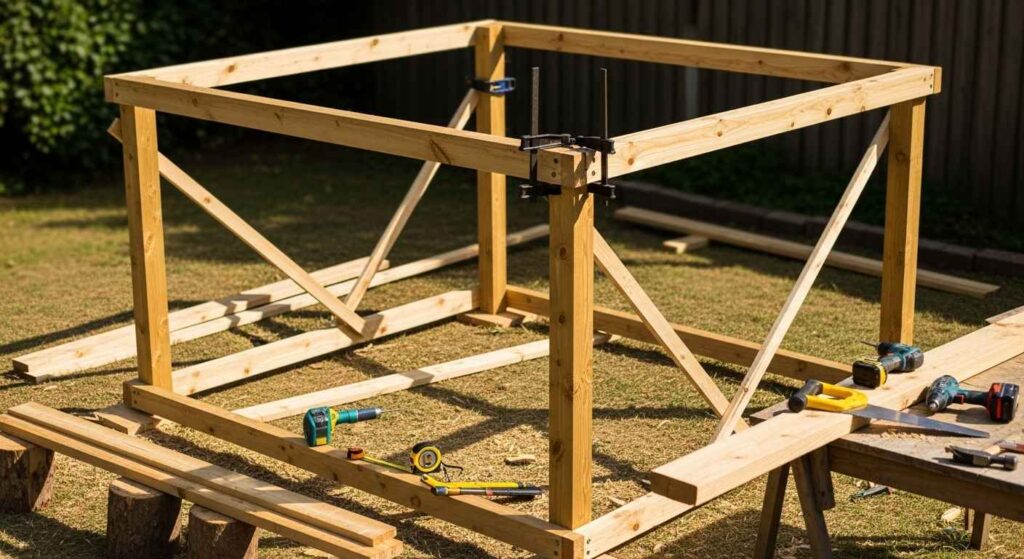
Common Design Mistakes to Avoid
Sizing Errors
Avoid these sizing problems:
- Too small for intended use
- Overwhelming the space
- Wrong proportions to house
- Inadequate height clearance
- Poor spacing between posts
Material Mismatches
Choose materials carefully:
- Conflicting with home style
- Inadequate weather resistance
- Poor quality hardware
- Mismatched finishes
- Incompatible plant choices
Structural Issues
Prevent problems with:
- Adequate foundation planning
- Proper post spacing
- Sufficient beam sizing
- Appropriate hardware
- Local building code compliance
Maintenance and Care
Seasonal Maintenance Tasks
Keep your pergola beautiful:
- Spring: Inspect for damage, clean surfaces
- Summer: Trim plants, check for pests
- Fall: Clear debris, prepare for winter
- Winter: Check for ice damage, plan improvements
Material-Specific Care
Wood Pergolas:
- Annual staining or sealing
- Regular cleaning
- Pest inspection
- Replace damaged boards
- Check hardware tightness
Aluminum Pergolas:
- Occasional washing
- Check moving parts
- Lubricate mechanisms
- Touch up scratches
- Seasonal inspections
Vinyl Pergolas:
- Regular cleaning with soap and water
- Check for cracks
- Minimal maintenance required
- Annual inspection
- Replace damaged sections
Also Read: Outdoor Furniture Trends 2025: Fresh Ideas for Your Space
Getting Started with Your Pergola Project
Planning Steps
Before you begin:
- Measure your space accurately
- Check local building codes
- Determine your budget
- Choose your style and materials
- Decide on professional vs. DIY installation
Professional vs. DIY
Choose Professional Installation When:
- Complex electrical work needed
- Structural modifications required
- Limited construction experience
- Local permits required
- Time constraints exist
Consider DIY When:
- Simple design chosen
- Basic construction skills available
- Time to complete project
- Budget constraints exist
- Enjoy hands-on projects
Permit Requirements
Check local requirements for:
- Structure size limits
- Setback requirements
- Height restrictions
- Foundation specifications
- Electrical work permits
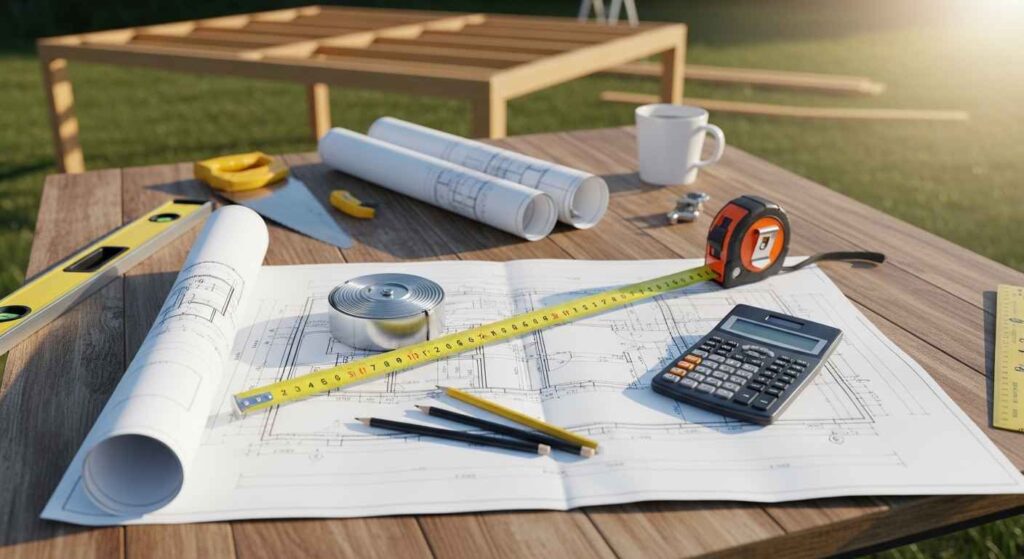
Conclusion
The right pergola design can create a beautiful, functional outdoor space that you’ll enjoy for years to come. Whether you choose a modern aluminum structure with smart technology or a classic wooden design with climbing vines, the key is selecting features that match your lifestyle and complement your home.
Consider your climate, maintenance preferences, and budget when making material choices. Don’t forget to plan for lighting, furniture, and landscaping to create a complete outdoor living experience. With proper planning and quality materials, your pergola will become the centerpiece of your backyard oasis.
Start with a clear vision of how you want to use your space, then choose the design elements that will make that vision a reality. Your perfect pergola is waiting to be built.
Also Read: 25 Affordable Backyard Makeover Ideas Under $1000
